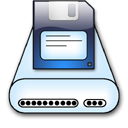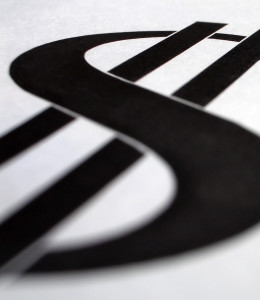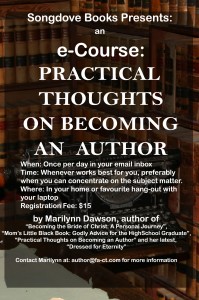
It stands to reason then, that how authors bring books to market has also changed. This list will cover four primary things a new author needs before they can get their book published. Three of these points will have sub-points further fleshing out items in this list.
- An idea: The first thing any author needs before they can get published, is an idea for their book. There’s nothing worse than sitting down and promptly going blank! Various experienced authors have shared the methods that worked best for them, when brainstorming subject matter for their books. Without an idea, there is no book.
 A way to capture that idea: The second thing any author absolutely requires for their book to become a reality, is a method of capturing the idea they brainstormed, and putting it into words.
A way to capture that idea: The second thing any author absolutely requires for their book to become a reality, is a method of capturing the idea they brainstormed, and putting it into words.
- Pen and paper: The historical manner in which book ideas were captured in the past, was by way of placing pen to paper. This is the oldest known method of writing a book, and is still used by some authors to this day.
- Typewriter or word processor: When the typewriter was invented, capturing an author’s thoughts became so much faster and more convenient! This quickly became the author’s writing tool of choice for many years. The electronic word processor would take it’s place briefly before the next item in this list.
 Computer with a word processing program installed: Ever since the mid-80’s, computers have largely taken over from the typewriter as most authors’ preferred tool of choice. The reasons are many.
Computer with a word processing program installed: Ever since the mid-80’s, computers have largely taken over from the typewriter as most authors’ preferred tool of choice. The reasons are many.
- No more jumped ribbons.
- No more garbled text where the author had tried to white out and then type over a mistake.
- Backspace on-screen is so much easier to deal with than corrector ribbon.
- An empty waste paper basket because the author can save their document on the computer, only printing as needed. This has the added advantage of fewer trips to the store to buy more paper.
- Copy, cut and paste – Three functions in all word processor programs that make editing a document so much less of a headache than retyping an entire page because a paragraph fit better in a different place, or because one word worked better in place of another word.
- A way to publish the idea: Once our author has generated their idea, and captured it, the next item on their must-have list, is a way to publish this idea as an actual book.
- Query letters: Prior to the early 2000’s, all publishing was done via large publishing houses that would only accept query letters where authors would pitch book ideas in hopes of landing a contract. Traditional publishing houses still exist, and this is still their primary way of taking on new authors and new book ideas.
- Agents: For authors unsure that they can properly represent themselves and their idea, agents continue to exist as well that will pitch book ideas to traditional publishers on behalf of the author. Not all agents are worth their salt however, so a new author choosing to pitch to traditional publishers should do their homework first.
- Print on Demand: Since the early 2000’s, publishing, just like reading and writing, has changed and evolved significantly! Authors no longer have to wait eons before a traditional publisher or agent gets back to them on the status of their book pitch. Companies such as Lulu and Createspace now let an author publish paperback or hardcover books entirely on their own, basically acting as their own publisher in the process. In addition to paperback and hardcover, authors can also publish directly to e-book formats either on their own, or via these companies and others such as Smashwords and Kindle. How the author communicates with these new methods of publishing is covered next.
- A method of communication: Once an author has settled on how their book will be published, they need a way to not only communicate with their chosen publishing avenue, but also a way to get the book to them.
- Envelopes and Stamps, and by extension a mailing address: If an author is the type to only use pen and paper, or the typewriter, they will need a personal mailing address, and the mailing address of the printer or publisher they are using. They will then need to make a copy of their work and send the original via the post office or courier, to the publisher. Any edits or changes to the document will be transmitted in this fashion as well.
- A phone: Many traditional publishing sources like to get the author on the phone to ensure they have all details correct. Agents like to talk to their authors as well. A phone is an important item in an author’s must-have list!
 Access to an Internet connection to make use of email: Almost more important than the phone however, is access to an Internet connection! Most agents, publishing houses, and print-on-demand companies want pitches, queries, and book contents sent electronically. Some will ask for this via email. Many will have a form on their website where the author uploads all documents and information related to their book.
Access to an Internet connection to make use of email: Almost more important than the phone however, is access to an Internet connection! Most agents, publishing houses, and print-on-demand companies want pitches, queries, and book contents sent electronically. Some will ask for this via email. Many will have a form on their website where the author uploads all documents and information related to their book.
Secondary to this first list, but equally integral to the process of publishing a book, are the following items:
- Editing: Publishing in today’s digital landscape is the easiest it’s ever been. So easy that many skip out on one very important detail, the editing process! The new author can be in print very quickly now, but to impress their readers, editing must be part of the writing process! Generally this is best done with a different set of eyes that are typically skilled in the nuances of written communication. This might be a friend, or it might be a paid editor. Careful editing will distinguish the good author from the bad.
- Formatting: If an author chooses a traditional publishing house, this task is handled by the publisher and the author has nothing to do with it. However, if an author chooses to self-publish, they must either learn how to format their own book, or pay a formatter to do it for them. Poorly formatted books are difficult to read, so choosing the best format for a book’s presentation is imperative.
- Cover art: Most of the time, the traditional publisher will work with the author to come up with a cover that suits the book. Authors self-publishing their book will need to create the cover art themselves, or hire a graphics designer to create it for them. People still judge a book by its cover, so the book’s idea needs to be prominently captured by the book’s cover. Elements of a good book cover include the following:
- Readable title text when viewed as a thumbnail image
- Imagery that makes the reader want to open the book to see what it’s about.
- A catchy blurb on the back cover that causes the reader to want more.
- An author bio at the bottom of the back cover. This will typically be short, and occasionally include an image of the author as well.
 Marketing and promotion: Lastly, every author, whether traditionally published or self-published, needs to engage in marketing and promotion for their book. Traditional publishers used to handle this part of book publishing very well, but in recent years more authors are complaining that it’s just not being done, or being done well. Marketing and promotion involves getting your book out where your readers will find it, and offering it at different price points for Christmas sales or Graduation sales, for example. Much like the car mechanic who groans at having to do paperwork, the author typically finds this last piece of the puzzle to be the most troublesome. Compared to capturing and writing their book idea, marketing and promotion feels like hard work. However, that’s exactly what it is, work, and the work must be done or the book won’t sell.
Marketing and promotion: Lastly, every author, whether traditionally published or self-published, needs to engage in marketing and promotion for their book. Traditional publishers used to handle this part of book publishing very well, but in recent years more authors are complaining that it’s just not being done, or being done well. Marketing and promotion involves getting your book out where your readers will find it, and offering it at different price points for Christmas sales or Graduation sales, for example. Much like the car mechanic who groans at having to do paperwork, the author typically finds this last piece of the puzzle to be the most troublesome. Compared to capturing and writing their book idea, marketing and promotion feels like hard work. However, that’s exactly what it is, work, and the work must be done or the book won’t sell.
So much more could be said on this topic. Many authors have shared their journey, what they have learned, what they’d do differently, and the best practises that have worked for them. This list comes from a published author as well. Therefore, if you’re looking at becoming an author, this is one of many lists that will help you get off the ground.
Songdove Books has released two self-study email courses that cover information covered in this article in more detail.
 The first course, “Practical Thoughts on Becoming an Author” is based on my e-book by the same title. The e-book is available on Amazon, iTunes, Google Play, Scribd, and other locations for $1.99, but it can be free to you for signing up for my monthly newsletter in the left-hand sidebar here. The course takes you step by step through the book with more detail added. Over the course of 22 days, you will receive a new lesson every single day, walking you through the steps necessary to take your book idea from rough draft to the printed page.
The first course, “Practical Thoughts on Becoming an Author” is based on my e-book by the same title. The e-book is available on Amazon, iTunes, Google Play, Scribd, and other locations for $1.99, but it can be free to you for signing up for my monthly newsletter in the left-hand sidebar here. The course takes you step by step through the book with more detail added. Over the course of 22 days, you will receive a new lesson every single day, walking you through the steps necessary to take your book idea from rough draft to the printed page.
 The second course, “Practical Thoughts on Becoming an Author – Creating Your Very First E-Book!” goes into more detail describing how to take your book and format it as an e-book for publication on the various e-book stores.
The second course, “Practical Thoughts on Becoming an Author – Creating Your Very First E-Book!” goes into more detail describing how to take your book and format it as an e-book for publication on the various e-book stores.
Both courses cost $15 and are available via gumroad.com. The purchase button is on each of the pages linked to each course title here. You can gift these courses to someone special in your life as well, by clicking the tiny gift box inside the purchase screen’s name field. The fields will change, allowing you to buy either of these courses for someone else.
